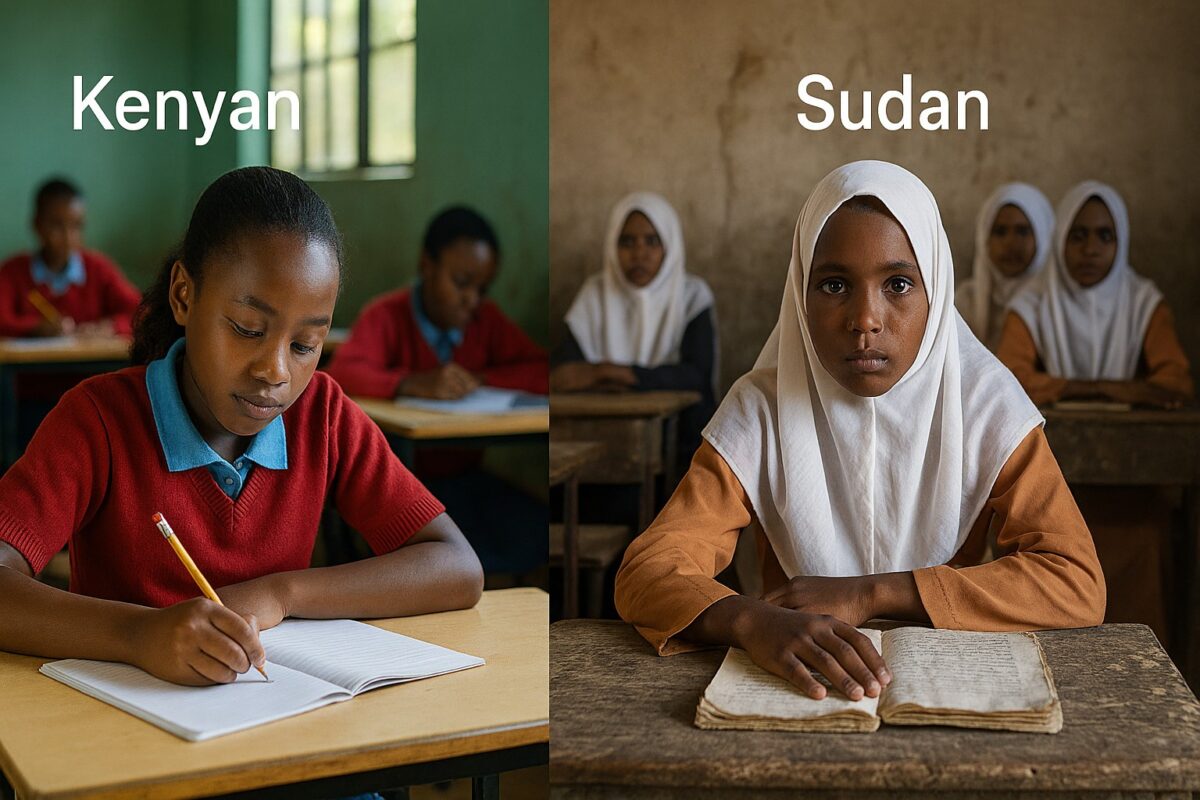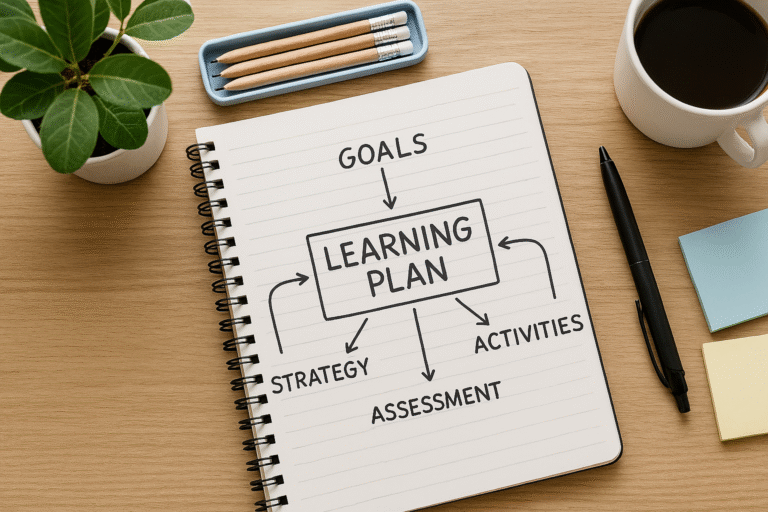
Educational disparities across Africa reveal complex patterns of development, policy implementation, and societal challenges. When examining why access to education in Kenya and Sudan differs so dramatically, we uncover a multifaceted story of political stability, governance decisions, cultural dynamics, and resource allocation that has shaped millions of children’s futures.
Kenya and Sudan, despite sharing geographical proximity in East Africa, present starkly contrasting educational landscapes. Kenya boasts approximately 85% literacy rates and has achieved near-universal primary education enrollment, while Sudan struggles with around 60% literacy and faces significant barriers to educational access, particularly for girls and rural populations.
Understanding these educational disparities matters because education serves as the foundation for economic development, social mobility, and national progress. The contrasting experiences of these two nations offer valuable insights into how political stability, policy choices, and cultural factors shape educational outcomes across Africa.
This comprehensive analysis examines the root causes behind these educational differences, exploring everything from government investment patterns to gender dynamics, conflict impacts to technological integration. By the end of this article, you’ll understand not only why these disparities exist but also what lessons other nations can learn from both Kenya’s successes and Sudan’s ongoing challenges.
Political Stability and Its Impact on Educational Development
Kenya’s Foundation of Educational Progress
Kenya’s relative political stability since independence in 1963 has provided the essential foundation for consistent educational policy development and infrastructure investment. While the country has experienced periodic political tensions, particularly around election cycles, it has avoided the prolonged conflicts that have devastated Sudan’s educational system.
This stability has enabled Kenya to implement and sustain long-term educational reforms. The introduction of Free Primary Education (FPE) in 2003 under President Mwai Kibaki’s administration marked a watershed moment, leading to an immediate enrollment increase of over 1.2 million children. The policy’s success was built on years of gradual preparation and infrastructure development that would have been impossible during periods of sustained conflict.
Kenya’s democratic governance structure, despite its imperfections, has allowed for educational policy continuity across different administrations. The transition from the 8-4-4 system to the current Competency-Based Curriculum (CBC) represents this kind of sustained policy evolution that requires stable institutions and consistent implementation frameworks.
Sudan’s Cycle of Conflict and Educational Disruption
In stark contrast, Sudan has experienced decades of civil wars, military coups, and political instability that have systematically undermined educational development. The Second Sudanese Civil War (1983-2005) alone destroyed thousands of schools and displaced millions of children from their educational pathways.
The conflict in Darfur, beginning in 2003, further devastated educational infrastructure in western Sudan. Schools were deliberately targeted, teachers fled conflict zones, and entire communities became internally displaced, breaking the continuity of learning for hundreds of thousands of children.
Political instability has meant that educational policies in Sudan lack consistency and long-term implementation. Frequent changes in government have led to abandoned reform initiatives, inconsistent funding, and a lack of institutional memory that hampers educational progress. The 2019 revolution and subsequent transition period, while offering hope for reform, have yet to translate into sustained educational improvements.
Government Investment and Educational Policy Framework
Kenya’s Strategic Educational Investment
Kenya has consistently allocated significant portions of its national budget to education, maintaining spending at approximately 5% of GDP over the past two decades. This investment has gone beyond basic infrastructure to include teacher training, curriculum development, and technology integration.
The implementation of Free Day Secondary Education in 2008 built upon the FPE success, creating a pathway for continued learning that has dramatically improved transition rates from primary to secondary school. Government data shows that gross enrollment rates in secondary education increased from 50% in 2008 to over 70% by 2020.
Kenya’s educational policy framework emphasizes systematic implementation with clear timelines and measurable outcomes. The development of an annual learning plan structure has enabled schools to align their activities with national educational goals while maintaining flexibility for local adaptation.
Sudan’s Inconsistent Educational Funding
Sudan’s educational investment has been erratic, with planned increases often failing to materialize due to competing priorities and economic challenges. While government documents have promised increases in educational spending to 20% of the national budget, actual allocations have rarely exceeded 10%, and implementation has been inconsistent.
The lack of a comprehensive Free Primary Education implementation means that many families in Sudan still face significant costs for their children’s schooling. These costs include not just fees but also uniforms, books, and transportation, which can represent substantial barriers for low-income families.
Political instability has meant that educational reforms are frequently abandoned when governments change. This lack of policy continuity has prevented Sudan from developing the kind of systematic approach to educational development that has benefited Kenya.
Educational Infrastructure and Human Resources
School Infrastructure Development Patterns
Kenya has invested systematically in educational infrastructure, with particular attention to rural and marginalized areas. The government’s commitment to building schools within reasonable distances of communities has significantly improved access, though quality disparities between urban and rural schools remain a challenge.
The introduction of digital literacy programs has seen Kenya integrate technology into its educational infrastructure. Solar-powered computer labs and internet connectivity initiatives have brought modern educational tools to remote areas, supporting innovative teaching methods and preparing students for a digital economy.
Sudan’s school infrastructure remains severely underdeveloped, particularly in conflict-affected regions and remote areas. Many schools operate in makeshift buildings without basic amenities like clean water, electricity, or adequate teaching materials. The destruction of schools during various conflicts has created infrastructure deficits that will take decades to address fully.
Teacher Training and Professional Development
Kenya has established comprehensive teacher training programs through institutions like Moi University and Kenyatta University, along with Teachers Service Commission initiatives that ensure standardized professional development. The country maintains manageable teacher-student ratios in most areas, though rural regions still face challenges.
The implementation of continuous professional development programs has helped Kenyan teachers adapt to curriculum changes and integrate new teaching methodologies. This systematic approach to teacher development has contributed significantly to improved educational outcomes.
Sudan faces critical teacher shortages, with many qualified educators leaving the profession due to low pay and poor working conditions. Rural areas are particularly affected, with some schools relying on untrained community members to fill teaching roles. The lack of systematic teacher training programs has created quality disparities that perpetuate educational inequalities.
Cultural and Gender Dynamics in Educational Access
Gender Equality Progress and Challenges
Kenya has made substantial progress toward gender parity in primary education, with girls’ enrollment rates now matching or exceeding boys’ in many regions. This achievement reflects targeted interventions including school feeding programs, sanitary pad distribution, and community awareness campaigns about girls’ education value.
However, gender disparities resurface in secondary education, particularly in marginalized counties where cultural practices, early marriage, and economic pressures continue to limit girls’ educational opportunities. The transition from primary to secondary school remains a critical point where many girls drop out of the educational system.
Sudan faces much more severe gender inequalities in education, rooted in deeply entrenched cultural norms and traditional gender roles. Early marriage practices, parental preferences for boys’ education, and cultural restrictions on girls’ mobility significantly limit female educational participation.
Rural areas in Sudan show particularly stark gender disparities, with girls’ completion rates for primary education often below 30%. These disparities are compounded by the lack of separate facilities for girls and inadequate provisions for menstrual hygiene management in schools.
Language Policy and Cultural Inclusion
Kenya’s bilingual education policy, using both English and Kiswahili as official languages, has created a more inclusive educational environment. The use of Kiswahili as a unifying language has helped bridge ethnic and cultural divides while maintaining English for international competitiveness.
Local language instruction in early primary years has been implemented in many Kenyan schools, helping children transition more effectively into formal education. This multilingual approach has improved learning outcomes and reduced dropout rates among minority communities.
Sudan’s Arabic-dominant instruction policy has created barriers for many ethnic minority groups whose mother tongues differ significantly from Arabic. This language barrier contributes to lower enrollment and higher dropout rates among marginalized communities, particularly in regions like the Nuba Mountains and Blue Nile states.
The lack of mother-tongue instruction in early years has been identified as a significant factor in Sudan’s lower literacy rates and educational outcomes. Children struggling with language barriers often fall behind academically and are more likely to abandon their education entirely.
Regional and Socioeconomic Disparities
Urban-Rural Education Divides
Kenya’s educational development has created noticeable urban-rural disparities, though these gaps are narrower than in many African countries. Urban schools generally have better infrastructure, more qualified teachers, and access to educational resources, while rural schools often struggle with basic facilities and teacher shortages.
The government’s focus on marginalized counties through affirmative action policies has begun to address some regional inequalities. Programs targeting northern Kenya, which historically had very low enrollment rates, have shown significant improvements in recent years.
Sudan’s regional disparities are much more pronounced, with Khartoum and other urban centers having relatively good educational facilities while rural areas, particularly in conflict-affected regions like Darfur and Kordufan, have extremely limited access to quality education.
These regional inequalities in Sudan are compounded by ethnic and political marginalization, creating cycles of educational disadvantage that perpetuate broader patterns of inequality and conflict.
Socioeconomic Barriers to Education
Despite free primary education policies, both countries face socioeconomic barriers that affect educational access. In Kenya, indirect costs like uniforms, books, and transportation can still present challenges for low-income families, though these barriers are generally manageable.
The introduction of school feeding programs in Kenya has helped address some socioeconomic barriers by providing nutritional support that encourages school attendance and improves learning outcomes.
Sudan’s socioeconomic barriers are more severe, with many families unable to afford even basic educational expenses. Child labor remains common, particularly in rural areas, as families depend on children’s economic contributions for survival.
Impact of Conflict and Displacement on Educational Access
Conflict Effects on Educational Continuity
Sudan’s history of prolonged conflicts has had devastating effects on educational access and quality. The destruction of schools, displacement of communities, and trauma experienced by children have created long-lasting impacts on educational development.
Internal displacement has disrupted educational continuity for millions of Sudanese children. Displaced families often lack access to schools in their new locations, and temporary settlements rarely have adequate educational facilities.
The psychological trauma of conflict affects children’s ability to learn effectively, requiring specialized support that is often unavailable in Sudan’s under-resourced educational system.
Kenya’s Education in Emergencies Approach
While Kenya has largely avoided internal conflicts, it hosts large refugee populations from neighboring countries including Sudan and Somalia. The country has developed comprehensive Education in Emergencies programs that provide educational access to displaced populations.
Kenya’s experience managing refugee education has led to innovations in flexible learning approaches, multilingual instruction, and community-based education models that have broader applications for educational development.
The integration of refugee education into national systems has created valuable lessons for inclusive education policies that benefit both refugee and host communities.
International Support and Development Partnerships
Aid Effectiveness and Educational Development
Kenya has been more successful in attracting and effectively utilizing international aid for educational development. Strong partnerships with organizations like UNICEF, the World Bank, and bilateral donors have supported infrastructure development, teacher training, and policy reform initiatives.
The country’s political stability and transparent governance structures have made it an attractive destination for educational aid, creating a positive cycle of investment and development.
Kenya’s development of a youth education series has attracted international support for innovative educational approaches that serve as models for other African countries.
Sudan’s ability to attract and utilize international aid has been severely limited by political instability and governance challenges. Sanctions and international isolation have restricted access to development financing and technical assistance.
However, humanitarian organizations have maintained educational programs in Sudan, particularly in conflict-affected areas, providing essential services despite challenging operating conditions.
Technological Integration and Educational Innovation
Digital Learning Initiatives
Kenya has emerged as a leader in educational technology integration across Africa. The Digital Literacy Program, launched in 2016, aims to provide laptops and internet connectivity to all primary schools, transforming how children learn and preparing them for the digital economy.
Mobile learning initiatives have leveraged Kenya’s advanced mobile phone infrastructure to deliver educational content to remote areas. Programs like Eneza Education use SMS and mobile apps to provide learning materials and support to students who might otherwise lack access to quality education.
The development of local educational technology solutions has created a thriving ecosystem of innovation that supports both formal and informal learning opportunities.
Sudan’s technological integration in education remains limited due to infrastructure constraints and economic challenges. However, some innovative programs have used mobile technology and radio to deliver educational content to remote and conflict-affected areas.
The potential for technological solutions to overcome some of Sudan’s educational challenges is significant, but requires sustained investment and political stability to achieve meaningful scale.
Teacher Development and Professional Standards
Systematic Teacher Training Approaches
Kenya’s approach to teacher development emphasizes continuous professional development and standardized training programs. The Teachers Service Commission has established clear career progression pathways and professional standards that motivate teachers and improve educational quality.
The integration of unique learning system approaches has enabled Kenyan teachers to adapt their methods to diverse student needs and learning styles, improving outcomes across different contexts.
Regular teacher assessments and performance evaluations ensure that educational quality remains high and that professional development needs are identified and addressed systematically.
Sudan’s teacher development system faces significant challenges including inadequate training institutions, low salaries that discourage qualified candidates, and limited professional development opportunities.
Many teachers in Sudan lack formal training and rely on traditional teaching methods that may not be effective for modern educational goals. The absence of systematic professional development programs perpetuates these quality issues.
Economic Factors and Educational Investment
Resource Allocation Priorities
Kenya’s economic growth has enabled increased investment in education, though resource allocation remains a challenge. The government has prioritized education in national development plans, recognizing its role in economic transformation and social development.
The integration of post-secondary education planning has helped align educational investments with economic development goals, ensuring that educational outcomes support broader national objectives.
Public-private partnerships have played an important role in educational development in Kenya, with businesses contributing to infrastructure, technology, and program development.
Sudan’s economic challenges have severely limited educational investment. High inflation, currency devaluation, and competing priorities for limited resources have constrained educational development.
The lack of a clear economic development strategy has made it difficult to align educational investments with broader economic goals, reducing the effectiveness of available resources.
Governance and Educational Administration
Administrative Effectiveness
Kenya’s devolved governance structure has created new opportunities and challenges for educational administration. County governments now play important roles in educational development, enabling more responsive and locally appropriate policies.
The Education Achievement Authority has provided frameworks for improving educational outcomes through better coordination between different levels of government and stakeholders.
Transparent governance structures and accountability mechanisms have improved the effectiveness of educational programs and reduced corruption in resource allocation.
Sudan’s centralized governance structure has struggled to address diverse regional needs and has been hampered by weak institutional capacity and frequent political changes.
The lack of effective coordination between different government levels has created inefficiencies in resource use and program implementation.
Current Educational Reform Initiatives
Policy Innovation and Adaptation
Kenya’s shift to the Competency-Based Curriculum represents a significant educational reform aimed at developing practical skills and critical thinking rather than rote memorization. This reform addresses criticisms of the previous 8-4-4 system and aligns education with modern economic needs.
The implementation of inclusive education policies has improved access for children with disabilities and those from marginalized communities, demonstrating Kenya’s commitment to educational equity.
Continuous policy evaluation and adaptation mechanisms ensure that reforms remain relevant and effective, with regular adjustments based on evidence and stakeholder feedback.
Sudan’s educational reform efforts have been hampered by political instability, but the post-2019 transition government has announced ambitious plans for educational transformation.
The challenge for Sudan lies in sustaining reform initiatives through political changes and securing the resources needed for effective implementation.
Future Prospects and Emerging Trends
Technological Advancement and Educational Transformation
Kenya’s continued investment in educational technology and digital infrastructure positions it well for future educational transformation. The integration of artificial intelligence, virtual reality, and other emerging technologies could further improve educational access and quality.
The development of homegrown educational technology solutions creates opportunities for Kenya to become a regional hub for educational innovation and to export its expertise to other African countries.
Sudan’s future educational development depends heavily on achieving sustainable peace and political stability. With these foundations, the country has significant potential for rapid educational improvement given its human resources and cultural emphasis on learning.
Regional cooperation and technology transfer could help Sudan accelerate its educational development by learning from Kenya’s experiences and adapting successful models to local contexts.
Frequently Asked Questions
Why is primary education more accessible in Kenya than in Sudan?
Kenya has achieved greater primary education accessibility due to its 2003 Free Primary Education policy, political stability that enables consistent implementation, and sustained government investment of approximately 5% of GDP in education. Sudan faces barriers including ongoing conflicts, inconsistent policy implementation, and limited infrastructure in rural and conflict-affected areas.
How have civil conflicts in Sudan impacted school attendance rates?
Civil conflicts in Sudan have devastated school attendance through the destruction of educational infrastructure, displacement of families, and the creation of unsafe learning environments. The Second Sudanese Civil War and Darfur conflict resulted in thousands of destroyed schools and millions of displaced children, creating long-term disruptions to educational continuity.
What is the literacy rate difference between Kenya and Sudan?
Kenya maintains approximately 85% literacy rates while Sudan’s literacy rate is around 60%. This 25-percentage-point gap reflects differences in educational access, quality of instruction, language policies, and the impact of conflicts on educational continuity.
How does gender inequality affect access to education in Sudan?
Gender inequality severely limits educational access in Sudan through cultural practices including early marriage, parental preferences for boys’ education, and restrictions on girls’ mobility. Rural areas show particularly stark disparities, with girls’ primary completion rates often below 30%, compared to Kenya’s near gender parity in primary education.
What reforms has Kenya implemented to improve education access?
Kenya has implemented comprehensive reforms including Free Primary Education (2003), Free Day Secondary Education (2008), the Competency-Based Curriculum, digital literacy programs, and school feeding initiatives. These reforms are supported by systematic teacher training and infrastructure development programs.
How do rural and urban education access differ in both countries?
In Kenya, urban-rural gaps exist but are narrowing through targeted investments in marginalized counties. Sudan faces much more severe disparities, with urban centers like Khartoum having relatively good facilities while rural areas, especially in conflict zones, have extremely limited access to quality education.
What role does language play in educational access in Sudan?
Sudan’s Arabic-dominant instruction creates barriers for ethnic minority groups whose mother tongues differ significantly from Arabic. This language barrier contributes to lower enrollment and higher dropout rates, contrasting with Kenya’s inclusive bilingual policy using English and Kiswahili.
How has Kenya integrated technology into its education system?
Kenya has implemented comprehensive digital literacy programs, provided laptops to primary schools, developed mobile learning initiatives, and created solar-powered computer labs for remote areas. These technological integrations have improved educational access and prepared students for the digital economy.
What international support do both countries receive for education?
Kenya attracts significant international aid due to its political stability and transparent governance, receiving support for infrastructure, teacher training, and policy reforms from organizations like UNICEF and the World Bank. Sudan’s access to international support has been limited by political instability and sanctions, though humanitarian organizations maintain educational programs in conflict-affected areas.
Conclusion: Lessons for Educational Development
The educational disparities between Kenya and Sudan illustrate how political stability, governance quality, and sustained investment shape educational outcomes across Africa. Kenya’s success demonstrates the importance of consistent policy implementation, while Sudan’s challenges highlight how conflict and instability can devastate educational development.
Kenya’s achievements in expanding educational access while maintaining quality offer valuable lessons for other developing nations. The country’s systematic approach to reform implementation, from Free Primary Education to digital literacy programs, shows how sustained commitment can overcome resource constraints and cultural barriers.
Sudan’s situation underscores the critical importance of peace and political stability for educational development. The country’s potential for rapid improvement, given its human resources and educational traditions, remains constrained by ongoing political challenges and resource limitations.
Both countries continue to face significant challenges in achieving truly equitable educational access. Kenya must address remaining rural-urban disparities and gender gaps in secondary education, while Sudan requires fundamental improvements in stability, infrastructure, and policy consistency.
The comparative analysis of these two nations provides crucial insights for policymakers, international development organizations, and educational leaders working to improve educational access across Africa. Success requires not just financial investment but also political commitment, cultural sensitivity, and sustained implementation capacity.
As both countries move forward, their experiences offer valuable lessons about the complex interplay between education, development, and social progress. Kenya’s continued innovations and Sudan’s potential for transformation represent different but equally important pathways toward educational equity and excellence in Africa.











